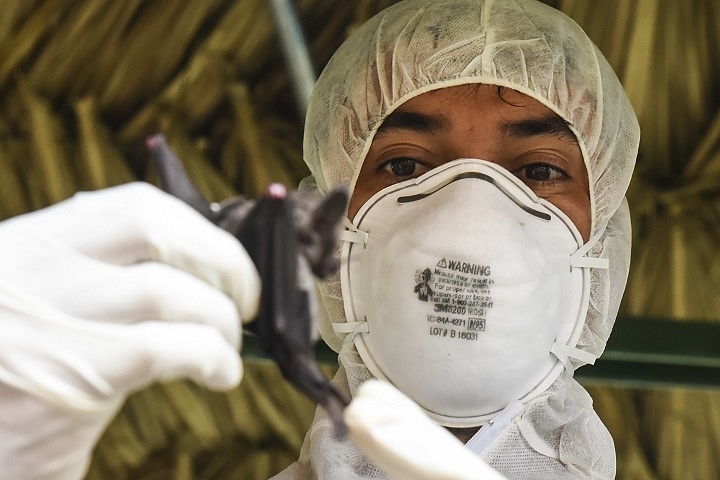Science
A Short Introduction To Chloroquine: The Anti-Malarial Drug Being Tested As Cure For Covid-19
- How exactly does chloroquine help the body fight against SARS-CoV-2, the virus that causes Covid-19?

Representative image (Health.mil)
Chloroquine may work as a nanomedicine at the cellular level according to a paper published in ‘The Nature Nanotechnology’ on 23 March.
The authors of the paper, Tony Y.Hu, Matthew Frieman & Joy Wolfram study the possible processes at a nano-substance level through which chloroquine could heal.
How chloroquine might work against Sars-Cov-2
Two components play an important role in this ‘intake’. One is called clathrin and the other is PICLAM.
In the case of a cell and virus, they need to come together and form a structure for the virus to enter the cell.
Chloroquine suppresses the production of PICLAM. This in turn renders clathrin unable to form the transport vesicles through which the virus can enter.
Chloroquine is thus a broad-spectrum inhibitor of nanoparticle endocytosis, point out the authors in the paper – particularly for nanoparticles of the size 14–2,600 nm and of spherical and discoidal shapes.
The SARS-CoV-2 is within the same size range (60–140 nm) and shape (spherical). (1 nano metre = 1/10^9 of a metre).
Along with this there is another way also through which the drug can work.
Chloroquine is a weak base – an alkaloid. So, when it gets into a membrane-bound structures of the cell organelles (which incidentally are also attacked by the virus), the drug interferes with the acidification of the cell organelles.
The study suggests that chloroquine induces inhibition of acidity-dependent viral fusion in various cell organelles.
The cell organelles thus, including endoplasmic reticulum, Golgi bodies etc. could prevent themselves from becoming centres of viral activity inside the cell.
Favourable outcomes
The cautious optimism over the use of the drug in therapeutic use against the virus does have a scientific basis.
Other combinations of drugs have been tried to treat Covid-19 too; as in the case of a French group study published in the International Journal of Antimicrobial Agents on 20 March this year.
The study involves the treatment of 42 patients with Covid-19, who were treated in-house. Of these, 26 were given hydroxy-chloroquine and the remaining were given the usual care.
Of the 26, six were additionally given antibiotic azithromycin.
By the end of the fifth day, all the six were cured of Covid-19.
Then, among those who took hydroxy-chloroquine alone, seven were completely cured.
In the control group for the same period, only two tested negative for the virus.
Chloroquine is a synthetic drug. Its natural form is quinine, which in turn is the bark of the cinchona plant.
The indigenous shamanic medicine of Peruvians used it for a long time in curing the illness of Peruvians.
When Christendom ‘conquered’ Peru, the Jesuits learned the bark powder extraction and then took the knowledge to the West.
Later, as colonialism and Christianity spread, so did malaria to the ‘new’ lands they ‘conquered’.
When the local shamanic knowledge of Peru failed to cure malaria, the missionaries demonstrated the power of their medicine and hence the superiority of their ‘God’ through the white pills of quinine.
Ethno-botanist Mark J Plotkin has a telling scenario in his famous book The Shaman’s Apprentince .
Here is an extract from the scholastic version that explains how the missionaries used malarial pills for proselytising:
Introducing ElectionsHQ + 50 Ground Reports Project
The 2024 elections might seem easy to guess, but there are some important questions that shouldn't be missed.
Do freebies still sway voters? Do people prioritise infrastructure when voting? How will Punjab vote?
The answers to these questions provide great insights into where we, as a country, are headed in the years to come.
Swarajya is starting a project with an aim to do 50 solid ground stories and a smart commentary service on WhatsApp, a one-of-a-kind. We'd love your support during this election season.
Click below to contribute.
Latest